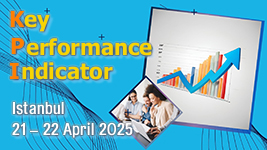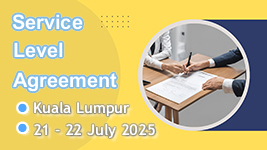ML32-KL
- Other
- courses : Jun 2013, Kuala Lumpur, Management & Leadership Skills
Internal Audit Transformation
From mere Auditors to Value Creators & Governance Partners
Code : ML32-KL
Date : 24 – 25 June 2013
Venue : Kuala Lumpur
Introduction
2001-2003 : A wave of financial reporting scandals (Enron, Worldcom, Parmalat, HBOS, etc.) rocked the corporate world. Regulations like Sarbanes-Oxley in the U.S. flourished around the world. Internal auditors were called “rock stars” because they were recognized as the experts on internal control. Unfortunately, the result was increased testing of low-level accounting controls, which completely missed the cause of the fraudulent reporting.
2008 : The global financial system almost collapsed, and the world is still recovering. In this case,
the root cause was identified in a 2009 survey of corporate risk managers: “The most remarkable finding of the survey is that :- the banking crisis was caused not so much by technical failures as by failures in organisational culture and ethics…The risks were reported but senior executives chose to prioritise sales…(because of) individual or collective greed, fuelled by remuneration practices that encouraged excessive risk taking… and organisational cultures which inhibited effective challenge to risk taking.”
Traditional internal auditors know how to test controls. World-class internal auditors know how to test governance and risk management, including the corporate culture. They are trusted advisers on governance and risk management. They achieve the tremendous potential of internal audit – by giving the best possible assurance that their organization will not be the next high profile failure.
In this dynamic workshop, you will see how some of the world’s best audit departments are meeting these and the many related challenges facing internal audit today. You will not just hear about what these great audit departments are doing. You will take away their actual evaluation tools and related practices, gathered through 20 years of internal audit best practices researches. You will learn how they use these tools and apply these practices – their strengths, challenges, and keys to success. You will see how to adapt the best practices you take away to your own organization.
This course will assist delegates to:
- Benchmark your internal audit services against the practices of world-class internal audit departments
- Take away more than 50 of these departments’ actual evaluation tools and other best practices in the 350 page course workbook
- Discuss how these tools and other practices are applied, including challenges and keys to success
- Gain an understanding of how to modify any of these practices to your own organization
- Get proven tools for evaluating the most powerful control in any organization – the corporate culture
- Use real-time risk assessment, not just annual
- Learn to perform risk-based audits in the simplest, most practical way
- Advise your organisation on how to best meet its corporate governance requirements and evaluate existing governance processes
- Explore internal audit’s role in developing and assessing corporate strategy
- Understand how to deal with the emerging risks of social media, mobile devices/BYOB, and “Big Data”
- See how some internal auditors use non-audit assurance and consulting services to add greater value
- Identify practical solutions with management rather than simply pointing out problems
- Discover the proven process used by many audit departments to transform themselves from ordinary to world-class
- Be able to raise the value you add to your organization to a higher level than ever before
The Goals
- To achieve world class audit functions.
- To transform your auditing roles, from just a mere Auditor into a Value Creator & a Governance Partner.
- To get updated with the substantive changes in the 2013 revision of the International Standards for the Professional Practice of Internal Auditing.
The Delegates
- Audit Committee Members, Chief Audit Executive, Vice Presidents, Directors, General Managers, Managers, Senior Auditors, Auditors, and Consultants of Internal Audit Department.
The Course Content
Day 1
The Foundation of Audit Transformation
- The Aspirational Definition of Internal Auditing
- The Pivotal Document for Change (COSO)
- Sample Audit Department Mission – Central Maine Power
Audit Department Structure and Annual Planning Process
- Audit Best Practice principles
- Align department structure with the business
- Use relationship managers
- Risk assessment that is: qualitative, participative, real-time, strategically focused
- Have a menu of audit services
Best audit practice examples from DuPont, Central Maine Power, Pacific Telesis
- How to plan, monitor, and aggregate results to form an entity-wide opinion
World Class Audit Methodologies
- Best practice principles
- Risk-based auditing
- Business process auditing
- Practices That Enhance Audit Projects :
- Best Practice Web Site and Database
- Use of Guest Auditors
- Criteria for Evaluating Performance Measures
- Value Proposition of Internal Auditing : How to Deliver Insight
- Auditing E-commerce applications – Microsoft
- Innovations in audit reports
Risk and Control Self-Assessment
- The key to evaluating soft controls – self-assessment with validation
- Working Inventory of Soft Controls
- Five Principles for Evaluating Soft Controls
- Structured Interview Guide – Culture of Compliance Review
- Audit Project Survey – Rensselaer Polytechnic, University of Minnesota, Precision Drilling
- Entity-Wide Self-Assessment Survey – Ameritech and Keys to Success
- Self-Assessment Workshops – Two Common Techniques, Case Study
- How to Select the Best Self-Assessment Technique for Your Organization
- Self-assessment for Hard Controls – Banking Organization, Alcoa
Day 2
Other Assurance and Consulting Services
- Business Process Improvement reviews – DuPont
- Internal Control Assessment – DuPont
- Internal Control Education – DuPont, Ontario Justice Ministries
- Audit’s role in mergers & acquisitions – Bank of America
- Consulting – FirstEnergy
- Audit issues: IT security, forensic accounting, fraud and audit committee challenges
Internal Audit’s Role in Enterprise Risk Management
- IIA Practice Guide
- Leading ERM frameworks: COSO and ISO
- ERM myth and reality
- Examples of ERM – Robust, Minimalist, Aquila, Texas Comptroller of Public Accounts
- ERM architecture
Emerging Practices
- Assessing the risk management process
- Internal audit’s role in advising and assessing governance process(es)
- Internal audit’s role in organizational strategy
- Auditing social media and mobile devices
- Assessing the use of “big data”
Staffing, Work Environment, Marketing and Measuring
- Best practice principlesCompetency model for staffing and career development – FirstEnergy
- Staff with multi-disciplinary experts
- How to create a value-adding culture in your department
- Marketing internal audit: tips and tricks
- Post-audit customer surveys – DuPont, FirstEnergy
- Audit department performance metrics – FirstEnergy
Transforming into a World Class Auditing Activity
- How to identify and prioritize your key stakeholders
- How to determine your stakeholders’ needs and expectations
- How to develop a vital, shared vision
- How to develop a strategic plan
- Audit Department Strategic Plan – FirstEnergy
COURSE SUMMARY : Profile of a World Class Audit department
Tags: Jun 2013, Kuala Lumpur, Management & Leadership Skills





